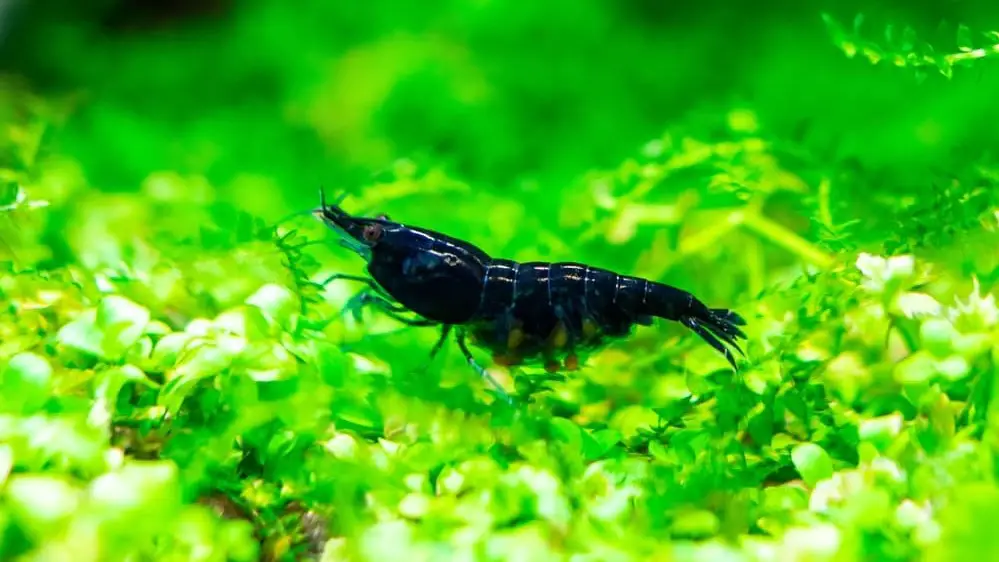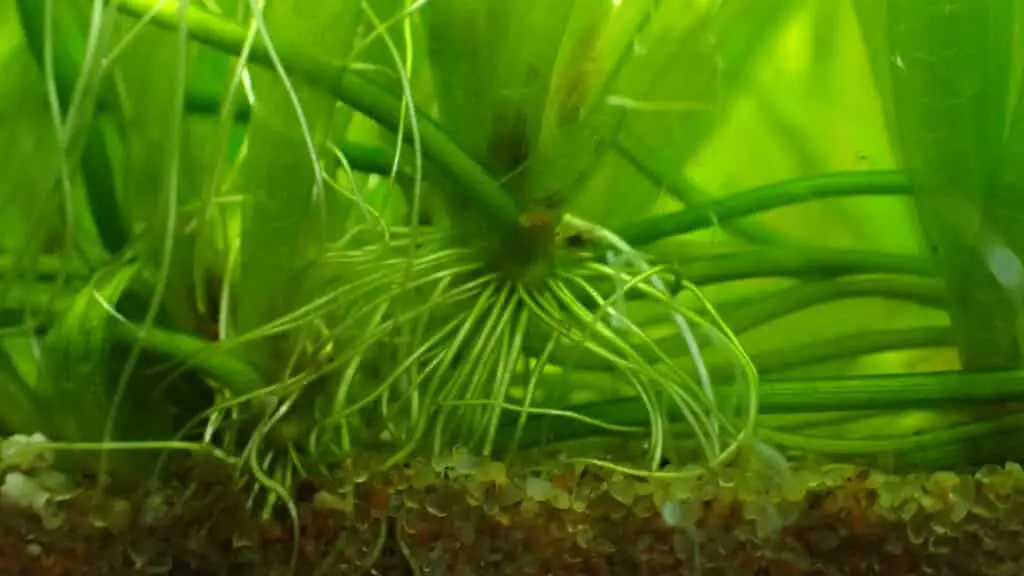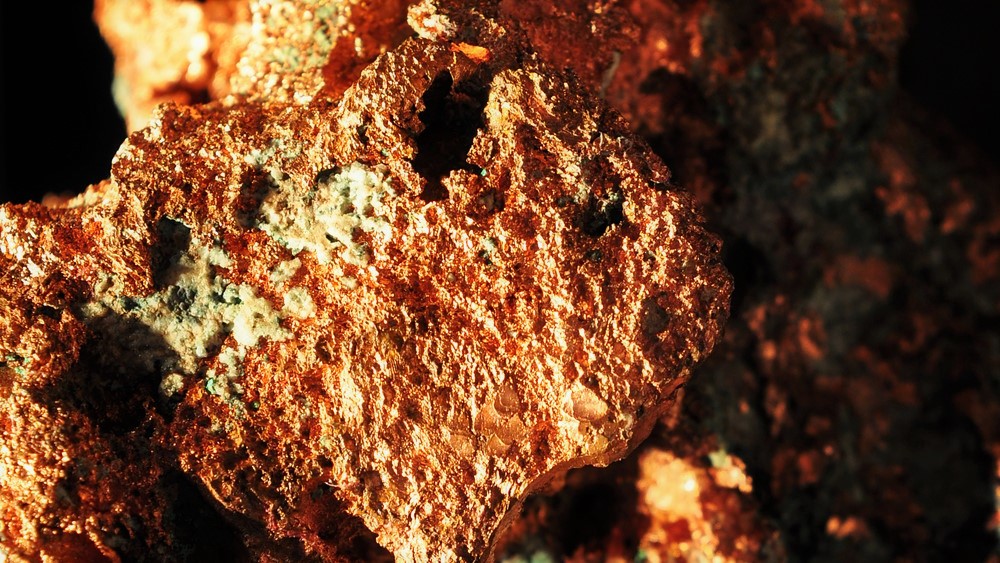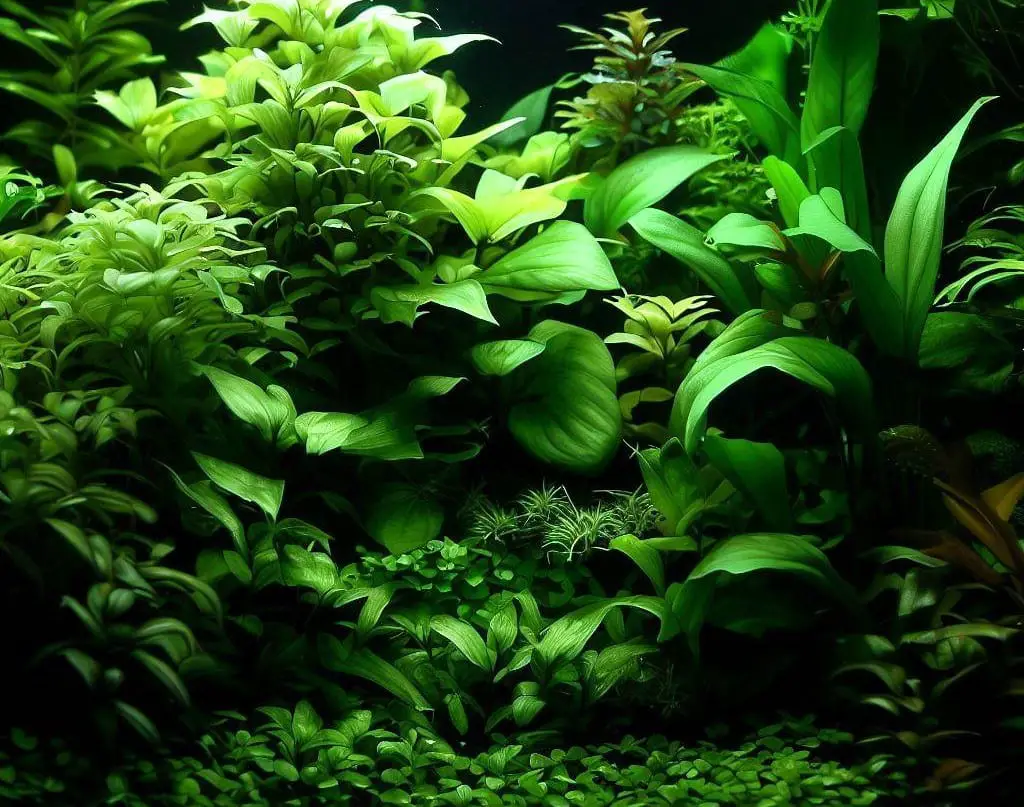Hello fellow shrimp keepers! I’ve spent countless hours observing my shrimp tank, marveling at the intricate balance of life it holds. One thing I’ve learned from my experience is the importance of using shrimp-safe plant fertilizers if needed. These fertilizers nourish our aquatic plants, creating a lush environment for our shrimp to thrive, all while ensuring their safety. In this guide, we’ll delve into the world of shrimp-safe plant fertilizers, exploring their benefits, how to use them, and the top choices available in the market.
A Special Note on Sensitive Shrimp Species
While the shrimp-safe plant fertilizers mentioned in this guide are generally safe for a wide range of shrimp species, it’s important to note that some species are more sensitive than others. This is particularly true for soft water bee shrimp, including Pinto and Taiwan Bee shrimp. These species are known for their specific water parameter requirements and heightened sensitivity to changes in their environment.
If you’re a keeper of these sensitive shrimp species, it’s recommended to avoid using fertilizers in your tank. Even shrimp-safe fertilizers, while generally safer, could potentially cause issues due to the heightened sensitivity of these shrimp species.
Here are a few tips to keep in mind:
1. Prioritize Water Quality: The health and well-being of your shrimp should always be your top priority. Prioritize maintaining optimal water conditions over achieving lush plant growth.
2. Choose Shrimp-Safe Plants: Opt for plant species that can thrive in the same water conditions as your shrimp and that don’t require additional fertilization.
3. Regular Water Testing: Regularly test your water parameters. This can help you detect any potential issues early and take corrective action before your shrimp are adversely affected.
Remember, the goal is to create a balanced ecosystem that caters to the needs of the most sensitive inhabitants – your shrimp. While plant fertilizers can help create a lush and visually appealing tank, they should never come at the expense of your shrimp’s health. With careful management and a keen eye for detail, you can maintain a thriving, healthy environment for all your tank’s inhabitants.

Understanding the Need for Shrimp-Safe Plant Fertilizers
As a dedicated shrimp keeper, you know that creating the perfect environment for your shrimp is more than just filling a tank with water. It’s about establishing a balanced ecosystem that promotes the health and well-being of every inhabitant. And a significant part of this ecosystem? The plants.
Aquatic plants play a vital role in a shrimp tank. They provide shelter, contribute to the tank’s oxygen supply, and even serve as a food source for the shrimp. But just like any other living organism, these plants need nutrients to grow and thrive. This is where plant fertilizers come into play.
Plant fertilizers are packed with essential nutrients like nitrogen, phosphorus, and potassium, as well as trace elements like iron, manganese, and zinc. These nutrients support various plant functions, from promoting vigorous growth and enhancing color to aiding in photosynthesis.
However, not all fertilizers are created equal, especially when it comes to a shrimp tank. Shrimp are sensitive creatures. Certain substances commonly found in regular plant fertilizers, such as copper, can be harmful—even lethal—to shrimp. While copper is an essential trace element for plants, even a slight overdose can pose a significant risk to your shrimp colony.
This is where shrimp-safe plant fertilizers become crucial. These fertilizers are specially formulated to nourish your aquatic plants while ensuring the safety of your shrimp. They contain all the necessary nutrients for plant growth but in levels that are safe for shrimp.
Using shrimp-safe plant fertilizers allows you to strike a balance—your plants get the nutrients they need to thrive, and your shrimp continue to live in a safe and healthy environment. It’s a win-win situation for your shrimp tank ecosystem.
So, if you’re serious about shrimp keeping and want to maintain a vibrant, thriving tank, understanding and using shrimp-safe plant fertilizers is a must. It’s not just about growing lush, beautiful plants—it’s about ensuring the overall health and balance of your shrimp tank.

The Science Behind Shrimp-Safe Plant Fertilizers
To fully appreciate the importance of shrimp-safe plant fertilizers, it’s essential to delve into the science behind them. These specially formulated products are a result of understanding both the nutritional needs of aquatic plants and the sensitivity of shrimp to certain elements.
Aquatic plants, like their terrestrial counterparts, require a range of nutrients to thrive. These nutrients can be broadly categorized into macronutrients and micronutrients. Macronutrients include elements like nitrogen, phosphorus, and potassium, which plants need in larger quantities. Micronutrients, also known as trace elements, include iron, manganese, and zinc, among others, and are required in smaller amounts.
In a natural aquatic environment, these nutrients are typically available in the water, sediment, and from decomposing organic matter. However, in a closed system like a shrimp tank, these nutrients can quickly become depleted, especially if you have a heavily planted tank. This is where plant fertilizers come in, replenishing these essential nutrients and promoting healthy plant growth.
However, the challenge arises when we consider the needs of the shrimp. Shrimp are sensitive to certain elements, particularly copper. While copper is an essential micronutrient for plants, it can be toxic to shrimp even in small amounts. This is because shrimp, like other invertebrates, struggle to regulate copper within their bodies, leading to a buildup that can cause harm.
Shrimp-safe plant fertilizers are designed with this delicate balance in mind. They contain all the essential nutrients that plants need, but the levels of potentially harmful elements like copper are kept to a minimum. This ensures that while the plants are getting their nutritional needs met, the shrimp are not exposed to harmful levels of toxic elements.
The formulation of these fertilizers is a delicate science, requiring a deep understanding of both plant nutrition and shrimp physiology. The goal is to create a product that promotes a thriving, lush planted tank without compromising the health and safety of the shrimp. This balance is the key to a successful shrimp tank, and it’s the science that makes shrimp-safe plant fertilizers an essential tool for any shrimp keeper.

Top Choices for Shrimp-Safe Plant Fertilizers
When it comes to shrimp-safe plant fertilizers, there are several top-notch options available in the market. These fertilizers have been carefully formulated to provide the necessary nutrients for your aquatic plants while ensuring the safety of your shrimp. Let’s explore some of the top choices:
1. ThriveS: This is a supplement specially designed for planted aquarium tanks that house freshwater shrimp. It’s a comprehensive option that provides all the necessary nutrients for your plants without containing harmful substances for your shrimp. ThriveS doesn’t contain copper, which is a common element in many fertilizers that can be toxic to shrimp.
2. Seachem Flourish: This is another popular choice among shrimp keepers. Seachem Flourish is a comprehensive plant supplement that contains a rich assortment of important micro-elements, trace elements, and other nutrients. It’s safe for shrimp and is ideal for planted tanks.
3. NilocG Aquatics Shrimp Specific Liquid Aquarium Plant Fertilizer: This product, also known as ThriveS, is a specially formulated all-in-one liquid fertilizer. It’s designed to provide the necessary nutrients for plant growth while being completely safe for shrimp. It’s an excellent choice for those who prefer the convenience of a liquid fertilizer.
4. Brightwell Aquatics FlorinMulti: This is a comprehensive multi-nutrient fertilizer that’s certified shrimp-safe. It’s copper-free and provides 13 essential nutrients that your plants need to thrive. It’s a great choice for planted shrimp and fish aquariums.
5. Shrimp Safe All in One Planted Aquarium Fertilizer by Glosso Factory: This fertilizer is formulated to supply plants with the proper balance of macro and micronutrients. It’s designed to keep specific nutrients as the limiting factor for plant growth, making it a safe choice for shrimp tanks.
Each of these fertilizers has its unique features and benefits, but they all share one common trait: they’re safe for your shrimp. When choosing a fertilizer, consider your specific needs, the type of plants you have, and the size of your tank. Remember, the goal is to create a thriving ecosystem where both your plants and shrimp can flourish.

How to Properly Use Shrimp-Safe Plant Fertilizers
Using shrimp-safe plant fertilizers correctly is just as important as choosing the right one. Proper usage ensures that your plants get the nutrients they need without putting your shrimp at risk. Here’s a step-by-step guide on how to do it:
1. Read the Instructions: Each fertilizer comes with its own set of instructions regarding dosage and frequency. It’s crucial to read and follow these instructions to avoid over-fertilization, which can harm both your plants and shrimp.
2. Measure the Right Amount: Most fertilizers come with a measuring cap or dropper to help you measure the right amount. If not, you might need a separate measuring tool. Remember, more is not always better. Overdosing can lead to nutrient imbalances and potential harm to your shrimp.
3. Apply the Fertilizer: The best time to apply the fertilizer is after a water change when nutrient levels are typically lower. Pour the measured amount of fertilizer directly into the water. If your tank is large, you might want to distribute it evenly across the tank to ensure all plants benefit.
when nutrient levels are typically lower. Pour the measured amount of fertilizer directly into the water. If your tank is large, you might want to distribute it evenly across the tank to ensure all plants benefit.
4. Monitor Your Tank: After applying the fertilizer, keep a close eye on your tank. Monitor your plants for signs of improvement or distress. Also, observe your shrimp for any changes in behavior. If you notice anything unusual, you might need to adjust your fertilization routine.
5. Regular Water Changes: Regular water changes are an essential part of maintaining a healthy shrimp tank. They help prevent the buildup of harmful substances and ensure a stable environment for your shrimp. Aim for a 20-25% water change every week.
every week.
6. Test Your Water: Regularly testing your water parameters can help you keep track of nutrient levels in your tank. This can be particularly helpful in determining whether your plants are getting the nutrients they need and whether you’re using the right amount of fertilizer.
Remember, every tank is unique. What works for one might not work for another. It might take some trial and error to find the right fertilization routine for your tank. The key is to start slow, monitor your tank closely, and adjust as necessary. With patience and careful management, you’ll be able to create a thriving environment for both your plants and shrimp.

The Role of Copper in Plant Fertilizers and Its Impact on Shrimp
Copper is a double-edged sword in the world of aquariums. On one hand, it’s an essential micronutrient that plants need for various biological functions. On the other hand, it’s a potential hazard for shrimp and other invertebrates. Understanding the role of copper in plant fertilizers and its impact on shrimp is crucial for maintaining a healthy and balanced shrimp tank.
The Role of Copper in Plant Fertilizers
Copper plays several important roles in plant health. It’s involved in many enzymatic processes and is crucial for photosynthesis. Copper also aids in carbohydrate and protein metabolism and promotes healthy root development and seed formation.
In plant fertilizers, copper is often included as a trace element. It’s typically present in small amounts, enough to meet the nutritional needs of the plants without causing toxicity.
The Impact of Copper on Shrimp
While copper is beneficial for plants, it’s a different story for shrimp. Shrimp, like other invertebrates, are highly sensitive to copper. They lack the physiological mechanisms to effectively regulate copper levels in their bodies. This means that even small amounts of copper can build up over time, leading to copper toxicity.
Symptoms of copper toxicity in shrimp can include reduced activity, loss of appetite, changes in color, and in severe cases, death. It’s a serious concern for shrimp keepers and one of the main reasons why regular plant fertilizers are not recommended for shrimp tanks.
Shrimp-Safe Plant Fertilizers: The Solution
Shrimp-safe plant fertilizers are the solution to this dilemma. These fertilizers are specially formulated to provide all the necessary nutrients for plant growth, including copper, but in levels that are safe for shrimp.
These fertilizers ensure that your plants get the nutrients they need to thrive, while your shrimp remain safe from the risk of copper toxicity. It’s a delicate balance, but one that’s crucial for maintaining a healthy and thriving shrimp tank.

DIY Shrimp-Safe Plant Fertilizers: A Cost-Effective Alternative
While there are many excellent commercial shrimp-safe plant fertilizers available, some aquarium enthusiasts prefer to create their own. DIY plant fertilizers can be a cost-effective alternative, and they allow you to have complete control over the nutrients your plants receive. Here’s a simple guide on how to create your own shrimp-safe plant fertilizer:
Materials Needed:
- Distilled water
- Epsom salt (Magnesium sulfate)
- Potassium sulfate
- Mono Potassium Phosphate
- Trace element mix (ensure it’s shrimp-safe and has low or no copper)
- A set of measuring spoons
- A 500ml or 1L container (depending on the size of your tank)
Procedure:
- Prepare Your Nutrient Solutions: You’ll need to prepare two separate solutions – one for macronutrients and one for micronutrients (trace elements). This is because certain nutrients can react with each other and precipitate out of the solution if mixed together.
- Macronutrient Solution: In your container, mix the following: 1 teaspoon of Potassium sulfate, 1/3 teaspoon of Mono Potassium Phosphate, and 1/2 teaspoon of Epsom salt with about 500ml of distilled water. Shake well until everything is dissolved.
- Micronutrient Solution: In a separate container, mix 1 teaspoon of your trace element mix with 500ml of distilled water. Again, shake well until everything is dissolved.
- Application: Add about 10ml of each solution per 100 liters of tank water after each water change. It’s best to add the solutions slowly and in an area with good water flow to help distribute the nutrients evenly.
Remember, these are general guidelines and the exact amounts may need to be adjusted based on your specific tank conditions. Always monitor your plants and shrimp closely after adding the DIY fertilizer and adjust the dosage as necessary.
Creating your own shrimp-safe plant fertilizer can be a rewarding experience. It allows you to take a more hands-on approach to your aquarium’s health and can be more cost-effective in the long run. However, it does require a bit more effort and understanding of plant nutrition. But with a little patience and careful management, you can create a thriving environment for both your plants and shrimp.
Conclusion The Importance of Shrimp-Safe Plant Fertilizers
Shrimp-safe plant fertilizers play a crucial role in maintaining a healthy and vibrant shrimp tank. They provide the necessary nutrients for plant growth without posing any harm to our beloved shrimp. By understanding the science behind these fertilizers and learning how to use them properly, we can create a thriving ecosystem for our shrimp to flourish. Remember, a healthy tank equals happy shrimp.
Happy Safe Shrimp And Plant Keeping!
Frequently Asked Questions
Q: Can I use outdoor plant fertilizer in my shrimp tank? A: No, outdoor plant fertilizers are not suitable for use in a shrimp tank. They often contain high levels of substances that can be toxic to shrimp, such as copper. Always use a shrimp-safe plant fertilizer for your tank.
Q: I have a low-tech tank with low-light plants. Do I still need to use a fertilizer? A: While low-light plants typically have lower nutrient requirements, they still need certain nutrients to thrive. A shrimp-safe plant fertilizer can help ensure they get the nutrients they need without harming your shrimp.
Q: Can I use CO2 injection in my shrimp tank? A: Yes, CO2 injection can be used in a shrimp tank and can help promote plant growth. However, it’s important to monitor your shrimp closely as sudden changes in CO2 levels can be harmful to them.
Q: I’ve heard about using root tabs. Are they safe for shrimp? A: Root tabs can be a good way to deliver nutrients directly to your plants’ roots. However, make sure to choose root tabs that are labeled as shrimp-safe. Some root tabs may contain high levels of copper, which can be toxic to shrimp.
Q: My shrimp are grazing on the plants. Is this normal? A: Yes, this is completely normal. Shrimp are omnivores and will often graze on algae and biofilm on plant surfaces. This is part of their natural behavior and contributes to a clean and healthy tank.
Q: Can I use tap water in my shrimp tank? A: Tap water can contain chlorine, chloramines, and heavy metals, which can be harmful to shrimp. It’s recommended to use dechlorinated water or a water conditioner that neutralizes these substances in your shrimp tank.
in my shrimp tank? A: Tap water can contain chlorine, chloramines, and heavy metals, which can be harmful to shrimp. It’s recommended to use dechlorinated water or a water conditioner that neutralizes these substances in your shrimp tank.
Remember, every shrimp tank is unique, and what works for one may not work for another. Always monitor your tank closely and adjust your care routine as necessary to ensure a healthy environment for your shrimp.
